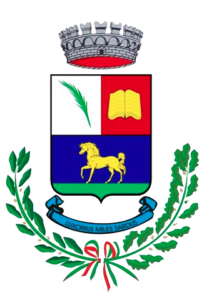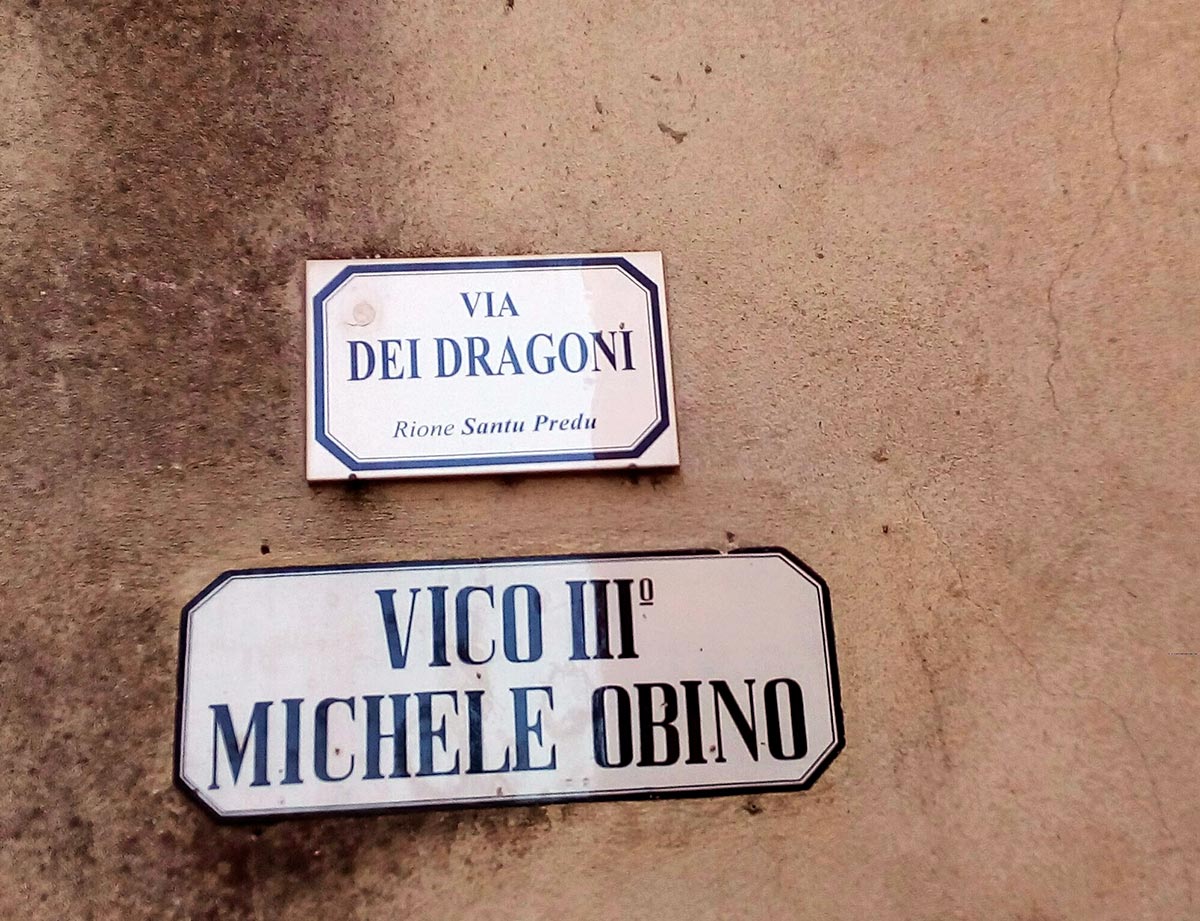
Santu Lussurgiu
During the three-year Sardinian revolutionary period, Santu Lussurgiu was one of the villas that was most loyal to the Angioyan cause and one of the most radicalised. February 1796, Sanna Corda wrote a letter describing Angioy’s journey to Sassari, in the village that at the time served as the entrance to the Capo di Sopra: ‘On the 17th, they marched towards Santu Lussurgiu accompanied by those numerous cavalries, at sunset they reached the village amidst the applause of numerous and elegantly dressed people, who awaited their arrival with unspeakable enthusiasm’.
Don Michele Obino, professor of Canon Law and Decretals at the University of Sassari, Angioyan movement ideologist, and likely author of the revolution’s most important document, ‘L’Achille della Sarda Liberazione,’ was the heart of this allegiance.
After Angioy’s escape, Don Michele was suspended from teaching and subjected to harassment. A few weeks later, on October 5, 1800, he saw the siege of his own town when his fellow peasants rose up against the feudal lord.
Obino fled the oppressive regime in Corsica and applied for refuge in France. In 1836, he made a little trip back to Sardinia before heading back to Paris, where he passed away on December 5, 1838.
The masses marching in favour of Angioy
Giommaria Angioy had the opportunity to stop at Santu Lussurgiu on his way to Sassari, where he was going to take up the post of Alter Nos; welcomed enthusiastically by the population, he tried to resolve the numerous conflicts that existed in the community. Angioy stopped in the town again on his route to Oristano on June 7, after the battle of Macomer. A parade of roughly 300-armed militia cavalry from the village followed him.
Upon discovering his deposition, Angioy left Arborense: a number of Alter Nos aligned men from Santu Lussurgiu were captured and detained by the Oristanese on the Tramatza bridge. Angioy chose to depart Sardinia and head for France with a small group of followers after returning to Santu Lussurgiu.
The Obino family: 'intellighenzia Lussurgese'

The repression
In the aftermath of the 18th-century upheavals, those who had aided or abetted Angioy in the anti-feudal conflict faced indictments, resulting in harsh punishments, prolonged incarcerations, and brutal executions. The princes Obino and Massidda, as well as the parish priest Cherchi and his associates, led the town’s elite in the outbreak of violence on October 5, 1800.
Similar to Bono and Thiesi, the Count of Moriana's ruler preferred military repression to negotiation. On October 13, the village was overrun, and Cavalier Grondona's command brought peace back to the area.
The Saint Mary of the Angels Chapel and convent
One of the earliest communities established on the island by the Order of Friars Minor is represented by the church and the adjacent convent. The founding date of the structure is 1473, according to two epigraphs inside. Some accounts state that the renowned preacher friar Bernardino da Feltre, who came to Sardinia in 1470, was present at the convent’s foundation; the current structure, which was altered and modified in the 18th century, conserves priceless artwork.
The historian Felice Cherchi Paba stated that Angioy made a speech “in front of the people & authorities gathered,” commemorating the religious activities that took place even during the anti-feudal period.
Revolutionary friars
According to historical archives and chronicles, two clergymen, Father Carlo Maria Natali of Piedmont, and Pier Michele Porcu of Luxemburg, were significant participants in the anti-feudal activities of 1796 and 1800. Michele Obinu, one of the leaders of the 1800 uprising, rewrote the letters of Paolo Meloni, delegate of Justice, destined for the Sassari government in Natali’s cell (a Lenten preacher): the monk himself had them sealed, and for this reason he was included in the list of “counsellors and supporters” of the uprising and expelled from the convent.
Also highlighted as a figure sympathetic to revolutionary ideology was the priest Michele Porcu, who “prevented the re-establishment of peace” through “his talks with the peasants.” Another monk, Francesco Antonio Pes, acted on behalf of the Obino and Massidda families in order to resolve their disagreements with political authority. It is not unexpected that priests took part in the anti-feudal uprisings: more than ten members of the Losini clergy were among those who took part in the uprisings against the feudal rule.
St. Peter the Apostle Parish Church
In the centre of the community is where the church is located. An inscription in the temple records that, in 1593, Antonio Atzori was consecrated bishop of Bosa in the presence of the bishops of Usellus and Alghero, while the precise year of construction is uncertain. Over the course of the first half of the nineteenth century, the structure was expanded and underwent major alteration; the ‘new’ temple was dedicated in 1914.
The precious marble altar and the austere 17th-century statue of the saint were constructed by labourers associated with the renowned 18th-century Sardinian stonemason G. B. Spazzi.
Remarkable architecture
Strolling around the quaint, winding streets of Santu Lussurgiu, one is struck by the beauty and complexity of the various residential regions. From the smaller, more economical –coghina and foghile – single-family homes, which had a kitchen and hearth merged into a single room, to the bigger, more lavish “tower houses,” which were fashionable in the 19th century because of their height and exquisitely designed interiors.
Another style that fairly depicts the expanding bourgeois classes is the classic palattu, or palace. The centrepiece is the several finely carved mantelpieces, which date back to the 16th century and were made in the late Gothic Aragonese style by local stonemasons known as picapedrers. Their work was inspired by the church architecture of the area, which provided ideas for the decorative models that were brought to homes.
San Leonardo di Siete Fuentes church
The church of San Leonardo di Sette Fuentes is located in the area of Santu Lussugiu (OR) in a densely forested valley on the slopes of the Montiferru mountain range.
The present-day building, located at an elevation of 700 metres in a region rich in mineral and health-giving water springs, is a result of multiple construction phases going back to the Middle Ages and restorations that changed the original layout throughout the following centuries. It features a Pisan Romanesque-style construction with a rectangular plan and a square-based apse, made of stone masonry in trachyte and basalt blocks in a single nave facing east.
The original Romanesque layout is credited to Benedictine monks, who erected a chapel in the first half of the 12th century as part of an agricultural-forestry ranch reliant on the Cistercian monastery of Our Lady of Corte in the Sindia area.
The “VII Funtanas,” as they are referred to in certain 12th-century documents of the Condaghe of St Nicholas of Trullas, must have also been outfitted to serve as a modest first-aid hospital for travellers, pilgrims, and the ill.
After the Torres Judgeship was dissolved in the latter part of the 13th century and the Montiferru region was incorporated into Arborea, the Arborean sovereigns made the fervent decision to found the curia of San Leonardo. They also gave the Knights Hospital of St Gavino of Jerusalem ownership of the ranch of Sette Fuentes, establishing an important centre for healthcare. The buildings that originally housed the hospital and hospice—of which a stub of an arch can still be seen on the right side of the church façade—were subsequently added to the church and turned into Muristenes, which are essentially little apartments for pilgrims.
While travelling to Sassari in February 1796, Angioy stopped by the church and wrote a notation about its condition, stating that "its repair was so necessary."
Within the church under the presbytery were two visible graves containing the remains of notable individuals until the mid-1800s. Guelfo della Gherardesca, son of Count Ugolino, was one of those whom Dante could have recognised. Inside is a Baroque wooden altar decorated with the Shires of the Order of Malta’s flags, a massive 17th-century statue of St. Leonard the Abbot, and a holy-water stoup from the 14th century. Every year on June 4 and November 6, the Confraternity of Saint Leonard and the parish priest Santu Lussurgiu hold a Novena in honour of the saint.
Bibliography
L. Carta, Il Settecento e gli anni di Angioy, Sassari, 2011
S. Castello, San Leonardo di Siete Fuentes (pannelli informativi).
F. Cherchi Paba, Don Michele Obino e i moti feudali lussurgesi (1796-1803), Cagliari, 1969
G. Mele (a cura di), Santu Lussurgiu. Dalle origini alla “Grande Guerra”,
2 vol., Nuoro, 2005
J. Pintus, La formazione di un’élite. Ascesa sociale dei donnos di Santu Lussurgiu in epoca sabauda, in “Quaderni Bolotanesi”, n. 32 (2006)
M. Rassu, La chiesa di San Leonardo di Siete Fuentes, Ghilarza, 2011
Credits
A. Nasone, G. Ruggiu, S. A. Tedde.

